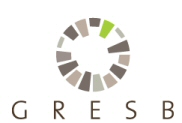
Bron
GRESB
GRESB, the global standard for environmental, social and governance (ESG) benchmarking for real assets, today announced the launch of the 2016 GRESB assessments. GRESB provides ESG data to institutional investors with over 8.1 trillion in assets under management. Assessment results and data is used by investors and others to understand the risk/return profile of real estate and infrastructure investments.
“Investors today are looking for companies with a high ESG performance and GRESB rating,” said Nils Kok, CEO, GRESB. “In fact, from what we’ve seen, companies with GRESB ratings have higher valuations and a larger pool of interested investors. GRESB’s goal is to provide investors with the ESG information they need to make more informed investment decisions.”
“In addition, the adoption of the UN Sustainable Development Goals in 2015, with a strong focus on real estate and infrastructure – and the COP 21 agreement to curb greenhouse gas emissions, brings increased attention to real assets,” added Kok. “Investors increasingly need to know the extent to which their allocation to real assets is either contributing to or mitigating greenhouse gas emissions.”
This year GRESB is expanding its scope to evaluate the sustainability performance of real assets with four distinct assessments – the GRESB Real Estate Assessment, the GRESB Developer Assessment, the GRESB Debt Assessment and the inaugural GRESB Infrastructure Assessment.
The global property and infrastructure industries are at the heart of the most important and far-reaching issues of our time, including urbanization, demographic change, resource constraints, environmental impacts, and emerging technologies. The design, construction and operation of assets reflects, drives and potentially mitigates the impact of all of these issues on occupants, owners, communities and society at large.
“Standardized monitoring and benchmarking tools provide institutional investors with greater ability to monitor assets and investment managers, as we strive to reach long-term return objectives and understand the risks that could get in the way. We are excited about using GRESB’s new infrastructure framework for systematic assessment and peer benchmarking of sustainability performance for current and future investments,” said Ted Eliopoulos, CalPERS Chief Investment Officer.
Since its launch in 2009, GRESB has assessed the performance of more than 1,000 property companies and funds around the world, establishing a global standard for ESG benchmarking that is now applied to a broader and more diverse class of real assets. Today, close to 200 GRESB members worldwide, of which about 60 are some of the largest pension funds and their fiduciaries, use the GRESB data in their investment management and engagement process to better understand the sustainability risks and opportunities intrinsic to their real assets investments.
2016 GRESB Assessments:
- The new GRESB Infrastructure Assessment has been developed in partnership with leading institutional investors, with the goal of establishing the global standard for ESG reporting and benchmarking of infrastructure investments.
- The 2016 Real Estate Assessment delivers a streamlined reporting process from asset to portfolio. This process is unique in the ESG space and leads to deep data insights for investors. The Real Estate Assessment also includes the new GRESB Health & Well-being Module, an optional supplement to evaluate and benchmark action to promote health and well-being by real estate companies and funds.
- The new stand-alone GRESB Developer Assessment evaluates the ESG performance of organizations that focus on real estate development activities.
- The 2016 Debt Assessment has been extended to support participation by banks, life companies, pension funds and mortgage REITs, in addition to real estate debt funds.



